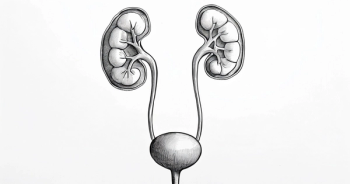
Optimal Time for Prostate Cancer Bone-Targeted Therapy
Daniel J. George, MD:For me, the best time to use radium-223 is in a patient who I think is early on in their course of castration-resistant disease, who is already beginning to show those signs of symptoms associated with their bone metastatic burden. So, if we think about that, and because it takes 5 months or more to administer, this is a therapy where we’re going to be looking for those symptoms relatively early on. Back to our case, this patient had minimally symptomatic disease. He wasn’t necessarily on narcotics, he wasn’t necessarily debilitated or having decreased functional status by it. You could argue that maybe this was a little bit early, but that makes sense to me in many cases.
For all our patients who have symptomatic bone metastatic disease, we want to at least be considering radiumparticularly in patients who are refusing chemotherapy, because we just don’t have other sorts of nonhormonal systemic therapies that we can offer these patients. And it has got a proven survival benefit independent of the hormonal therapies that we also use. To me, this is a great example of an on-label use: using this drug in patients with bone disease that is driving the natural history, the progression of cancer, and ultimately the survival or death of this patient.
Rajan T. Gupta, MD:Initiating radium-223 earlier versus later does have advantages. Some studies have shown that there is a survival advantage of being on radium-223 versus not. I think that the idea of adding it on earlier, before the patient becomes symptomatic from their bony metastatic disease, does have advantagesboth for the symptomatic aspect of the patient as well as potentially for their overall disease progression.
The time at which to use radium-223 is an interesting question. I think that we have to really take the 2 data points together, which are the patient’s clinical symptoms as well as the imaging findings. And the imaging findings in one case may suggest that the patient’s disease is getting worse, but we really need to make sure that we’re talking to the patient, as well, and getting a sense as to how they’re feeling about things.
Daniel J. George, MD:At Duke, I work in a multiphysician practice: There are 5 medical oncologists. I have my own practice, but we have tumor boards regularly. We try to work as a consensus group and together form our practice patterns. Over the last 3 years, we’ve incorporated radium-223, initially at the later stages of metastatic castration-resistant disease in many patients who had already progressed on chemotherapy. More recently, we’ve used it in the earlier disease settings in patients who haven’t had chemotherapy yet, in many cases overlapping with some of our secondary hormonal therapies like abiraterone/prednisone or enzalutamide in patients who have bone-dominant disease. We use a lot of radium-223 in that context.
My experience with this in general has been really positive. We’ve been able to administer a full 6 cycles much more frequently when we’ve used the agent in that earlier disease setting. We see less anemia, we’ve given fewer transfusions, we’ve had less breakthrough pain associated with this disease, and, for the most part, our patients have been able to complete that and still go on to subsequent therapies, including chemotherapies, following radium-223.
Rajan T. Gupta, MD:My personal experience with radium-223, as a radiologist, is a little different from some other peoples’ in the oncology space, or the radiation oncology space, or even some of my nuclear medicine colleagues’. One thing that I see at base is the imaging side of the impact of the drug, and it can be quite remarkable how many patients do better. For example, in this case here, the patient had no new metastatic disease after 6 months of treatment, and comparing where they were before to where they are today is an extremely helpful thing to see.
Transcript edited for clarity.
December 2012
- A 65-year old gentleman presented to a urologist with urinary incontinence
- Digital rectal examination was unremarkable
- Serum prostate-specific antigen (PSA) level of 10.8 ng/mL
- Transrectal ultrasound and biopsy revealed adenocarcinoma of the prostate gland with Gleason score 7(3 + 4)
- Bone scan and CT showed no evidence of metastasis
- The patient opted for radical prostatectomy; pathology confirmed Gleason 7 prostate cancer with evidence of extracapsular extension and negative nodes; pT3aN0
- Immediately following surgery, his PSA level was undetectable (<0.1 ng/mL)
December 2014
- Two years later the patient developed disease progression
- PSA level increased rapidly to 15 ng/mL
- He was asymptomatic
- He was referred to an oncologist by his urologist
- Bone scan and CT were negative
- He was started on androgen deprivation therapy and had an initial response of PSA decline to 0.5 ng/mL
December 2015
- Over the next year, his PSA level increased to 35 ng/mL
- Repeat imaging studies were done:
- Bone scan showed multiple boney metastases in the spine, pelvis, ribs, and femur
- CT scan showed no visceral or nodal disease
- Within 3 months his PSA level rose to 145 ng/dL and he began complaining of fatigue and pain
- He was started on abiraterone and prednisone
- Additionally, he opted for therapy with radium-223
- After 3 infusions of radium-223 his PSA declined to <10 ng/dL; ALP remained stable
- After 6 cycles of treatment, CT and bone scan confirmed stable disease with no new metastases
- The combination was generally well tolerated; the patient experienced grade 2 anemia and fatigue






































